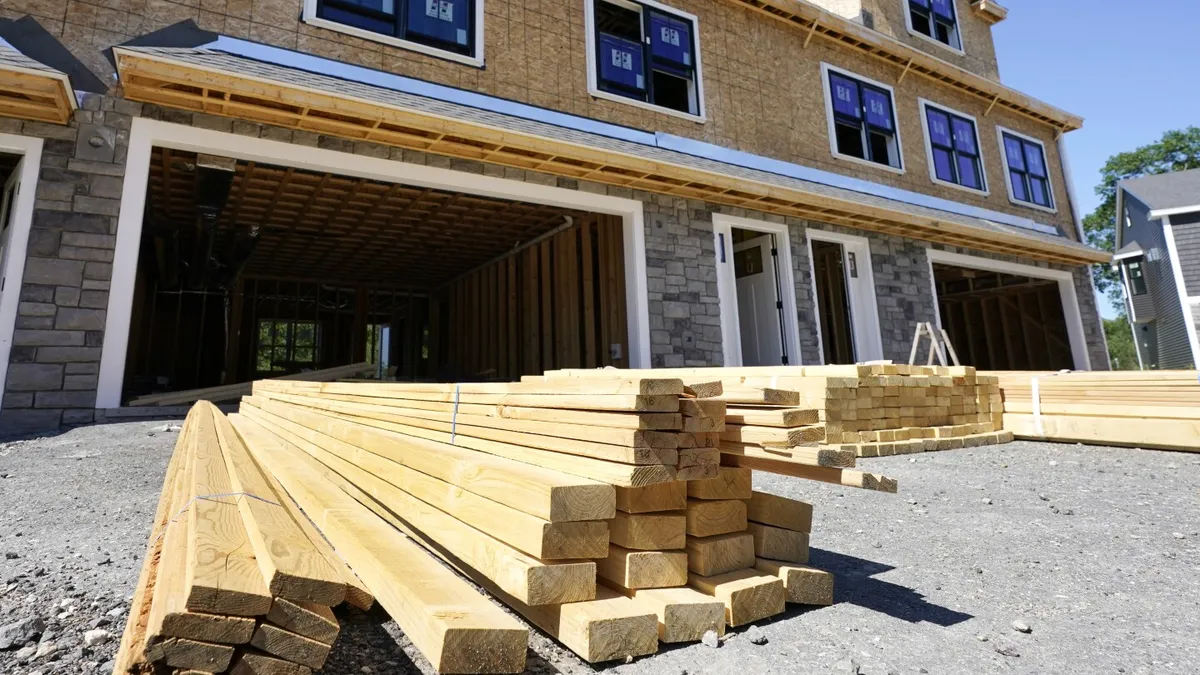
Are you shopping for a new home or considering a kitchen renovation or installing a new deck? If so, be prepared for increased costs. The Trump administration has imposed tariffs on imported goods from Canada, Mexico, and China, which are significantly driving up the prices of building materials essential for new residential construction and home remodeling projects. According to the National Association of Home Builders (NAHB), these tariffs are expected to raise the cost of building a single-family home in the U.S. by approximately $7,500 to $10,000.
These increased costs are typically passed down to homebuyers, resulting in higher home prices. This trend could negatively impact demand in an already sluggish U.S. housing market, where many builders are compelled to offer costly incentives to encourage sales. For instance, We Buy Houses in San Francisco, a company that purchases and renovates foreclosed homes, is raising the prices of its refurbished properties by 7% to 12%. This adjustment comes even after the company saved $52,000 by stockpiling 62% more Canadian lumber than usual. CEO Mamta Saini expressed concerns, stating, “The uncertainty of how long these tariffs will continue has been the most challenging aspect of our planning.”
The timing of these tariffs is particularly unfortunate for the homebuilding and home remodeling industry, as this period usually sees a surge in home sales. The looming trade war has unsettled the stock market and raised concerns about the economy, potentially causing many prospective homebuyers to hesitate. Danielle Hale, chief economist at Realtor.com, noted that rising costs from tariffs leave builders with limited choices: either pass on higher costs to consumers, resulting in increased home prices, or reduce material usage, which could lead to smaller homes.
The prices of building materials, particularly lumber, have been on the rise. Even with the White House delaying the rollout of certain tariffs, lumber futures surged to $658.71 per thousand board feet on March 4, marking the highest level in over two years. These increases are already impacting construction costs. For example, Dana Schnipper, a partner at JC Ryan, a building materials supplier, cited an instance where a Canadian company provided wooden doors at a lower cost than American alternatives. However, with the impending tariffs, the cost for the remaining job will increase by $30,000 after markup.
Finding alternatives to avoid tariffs is not always feasible. Bar Zakheim, owner of Better Place Design & Build, a contracting firm in San Diego, stated that Canadian lumber is still the best option available. Consequently, he has increased his prices by 15% compared to last year and noted an 8% decline in job opportunities. “It’s looking to be a slow, expensive year for us,” he added.
On March 6, the Trump administration announced a one-month delay on its 25% tariffs on certain imports from Mexico and Canada, including softwood lumber. However, 20% tariffs on imports from China have already taken effect. Additionally, a 25% tariff on steel and aluminum imports — rising to 50% for those from Canada — began on March 12. The tariffs on Mexican and Canadian goods set to be implemented next month are projected to increase the cost of imported construction materials by over $3 billion, as reported by the NAHB.
President Trump emphasized the need for these tariffs, claiming they would reclaim wealth lost under previous administrations. Overall, building material costs have surged by 34% since December 2020, a significant concern for builders who rely on imported materials. Approximately 7.3% of products used in single-family home construction are imported, with nearly a quarter sourced from Canada and Mexico, particularly key materials like lumber and gypsum.
The confusion surrounding the tariff implementation and its economic implications may have a more substantial chilling effect on the new-home market than the price increases themselves. Carl Reichardt, a homebuilding analyst at BTIG, noted that uncertainty makes it challenging for builders and consumers to plan, ultimately complicating pricing strategies. “If people are worried about their jobs and the future, it’s very difficult to decide to buy a new home,” he stated.
The effects of tariffs are already observable in local markets, such as at Slutsky Lumber in Ellenville, NY, where co-owner Jonathan Falcon mentioned a noticeable decrease in consumer readiness for spring projects. He expressed concern that smaller businesses would struggle to absorb the impact of the tariffs, stating, “This will make it harder for small lumber yards to compete with larger businesses.”